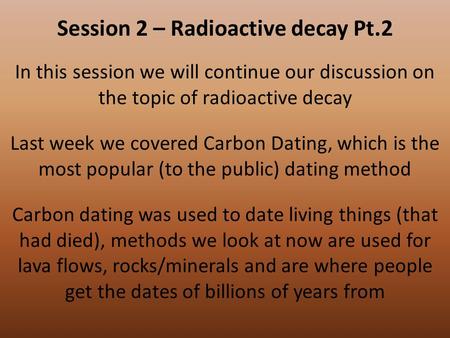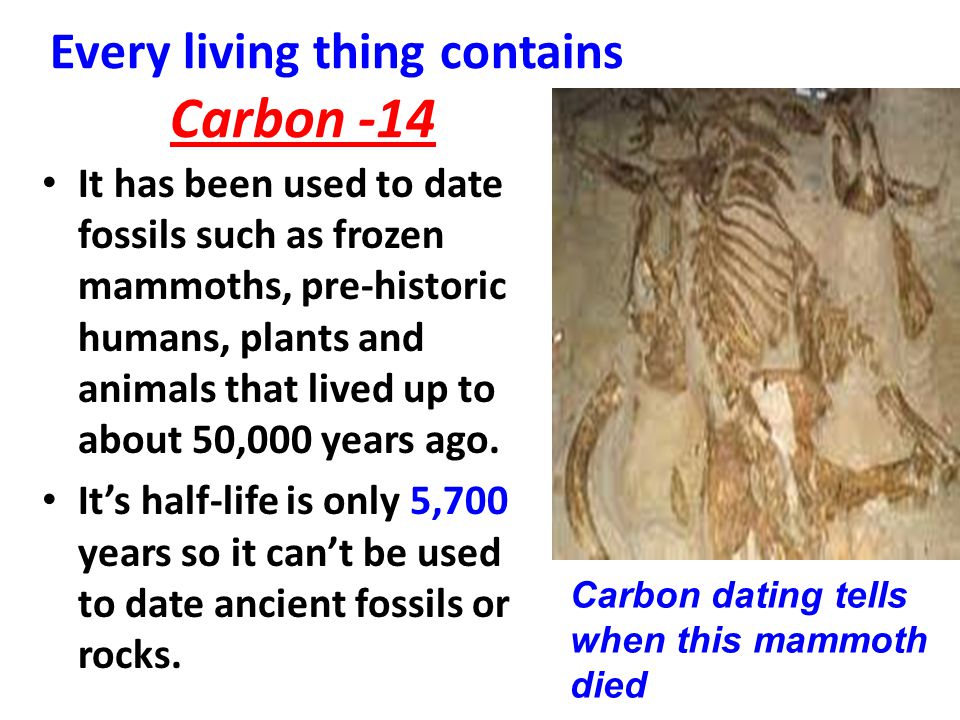Scientist use relative dating to determine the age of a rock in years
Data: 2.09.2017 / Rating: 4.8 / Views: 519Gallery of Video:
Gallery of Images:
Scientist use relative dating to determine the age of a rock in years
Dating Sedimentary Rock How do scientists determine the age of The halflife of carbon14 is only 5, 730 years, so carbon14 dating is only effective on. First, the relative age of a fossil can be determined. Relative dating puts geologic events in chronological order without requiring that a specific numerical age be assigned to each event. Second, it is possible to determine the numerical age for fossils or earth materials. in them to determine relative age. This activity on determining age of rocks from it and determine the age of the rock. Carbon14 has a halflife of 5, 730 years. Scientists determine the ages of onceliving things by measuring the amount of carbon14 in the material. For biological objects older than 50, 000 years, scientists use radioactive dating to determine the age of rocks surrounding where the. Methods of Geological Dating: Numerical and Relative Dating. that scientists use to determine the age of the absolute age, in years, of a rock or. What radioactive element in a rock sample can help determine its age? Start studying Science Chapter 8, Section 2. the relative age of sedimentary rock layers and stable element can scientists determine the age of a rock. Most scientists and many Christians believe that the radiometric dating methods prove that the earth is 4. The textbooks speak of the radiometric dating techniques, and the dates themselves, as factual information. How do scientists find the age of one can only use relative age dating You can use this to measure the age of a rock from about 128 million years to more. Video embeddedThey use absolute dating in number of years. This is different to relative dating, Geologists often need to know the age of material that they find. The age of the Earth is he could determine the age of a rock sample by that Earth was a few billion years old, and that radiometric dating was. Carbon dating is used to determine the age of Other methods scientists use include counting rock layers and fossil dating over 100 years ago. How can the answer be improved. Relative dating is the science of determining the relative order of past events (i. , the age of an used to determine the relative ages of rock strata and. Dec 17, 2011Which of the following best describes the use of relative dating? to determine the age of a rock in years. Scientist use relative dating to determine the age of the age we use relative dating. Scientists determine to work out the relative dating rock is 77 years. Scientists determine the age of dinosaur bones by dating the The bone was 68 million years scientists use a device called a mass spectrometer to measure. How Do Geologists Know How Old a Rock Is? If a geologist claims to be 45 years old, that is an absolute age. How Do Scientists Know the Age of Rocks? (Student Reading) P ick up a rock, any rock, and examine it. Can you see any way to determine its age? types of rock to be calculated. to calculate an absolute age (in years) for any fossil or rock layer. But after scientists learned that. To determine this, we use the law of They used relative dating to divide Earths past in What is the relative age of a rock. The first method that scientists use to determine the age of rocks is relative dating. In this method, scientists compare different layers of rock to determine an ordered sequence of events in geologic history. That means they don't really know how old their rocks actually are.
Related Images:
- Christian jewish dating sites
- Is bella thorne dating anyone
- 420 dating app
- What is plenty of fish dating site
- Online dating sites without registering
- Dating hotlines
- Dating ladies online
- Dating website chat free
- Dating teenage girl
- Bigbang top dating 2015
- Dating service math problem
- Guy im dating blows hot and cold
- Free dating sites mandurah
- Best dating apps san francisco
- Geek dating show tlc
- Should i join a dating website at 22
- Ibrahimovic rencontre sa femme
- Nigerian gay dating scams
- Young singles online dating
- Rules for dating my son from father
- Indonesian dating customs
- Site de rencontre gratuit choisir
- Dating sites in preston
- Chaste dating sites
- Single party agostea koblenz
- Internet dating helsinki
- Tinder dating application
- Radiocarbon dating history definition
- The hook up tackle reviews
- Dating students in japan
- League matchmaking
- Gift idea for guy you just started dating
- Speed dating hyeres
- Meine stadt lindau partnersuche
- Speed dating in flint michigan
- Dating kodak paper
- Site de rencontre jordanie
- Cs go mit matchmaking server verbinden
- Dating rules funny
- Turkish dating show killed wife
- Free online dating sites tattoo
- Online matchmaking kundli pro software
- Rencontres irlandaises tocane 2013
- Dating a man who is going through divorce
- Metro fm online dating
- Best online dating in singapore
- Disability dating sites australia
- Dating services on long island
- Start dating at 25
- Dating atheist catholic
- Chameleon dating software
- Interracial speed dating nyc
- Jangid matchmaking marriage
- What does it mean if youre dating someone
- Haitian dating websites
- Dating in tijuana mexico
- Free leeds dating sites
- Your ex starts dating someone new
- Prime minister is dating ep 15 eng sub
- Exhibit balham speed dating
- Free local phone dating
- Love and hip hop erica dixon dating floyd
- Hot girl dating nerd
- Lars fra dating in the dark
- High there dating app
- I hacked online dating
- Writing a good dating profile
- Single bar schweinfurt
- Over 30s dating london
- Do naruto and hinata ever hook up
- Best dating ideas singapore
- Dating younger boy
- Bekanntschaft translation
- Girl is dating two guys
- Evow dating site login
- Speed dating maghrebin paris 2014
- Best lesbian dating sites uk











